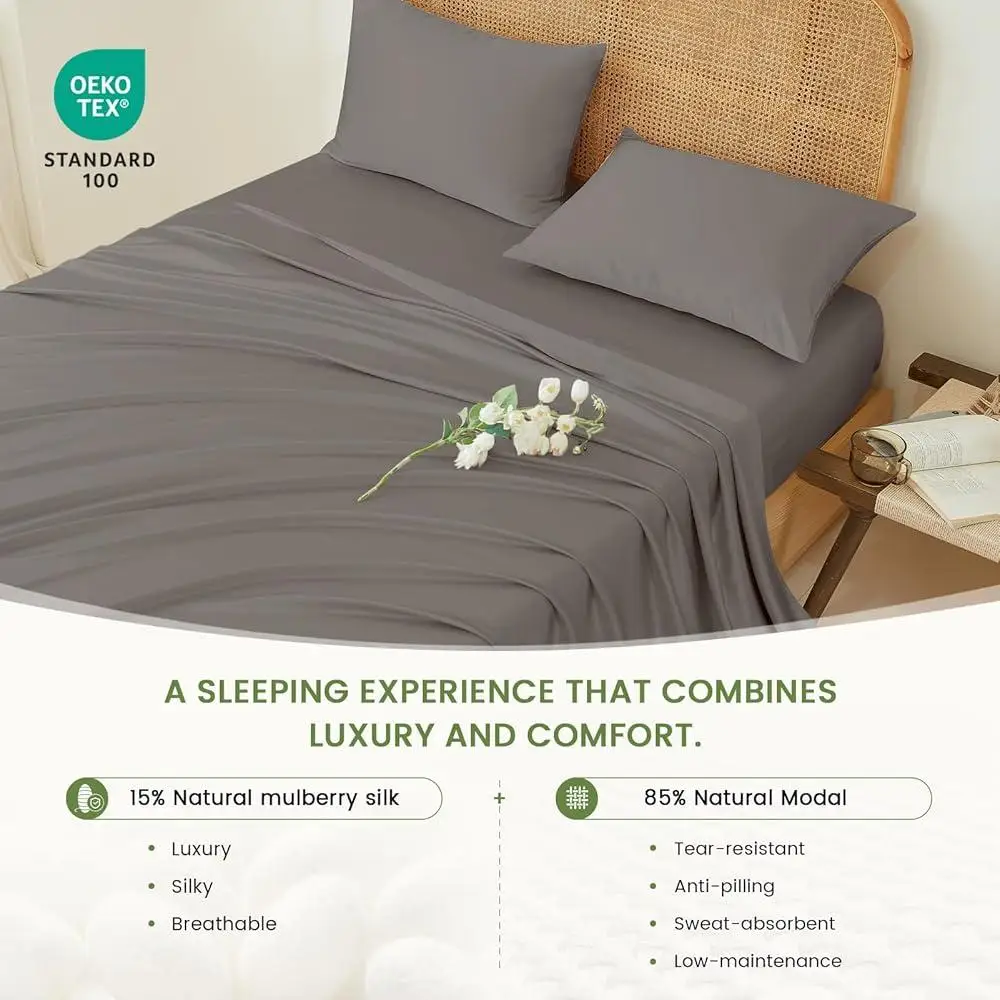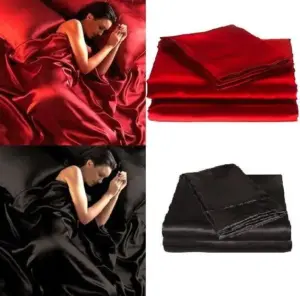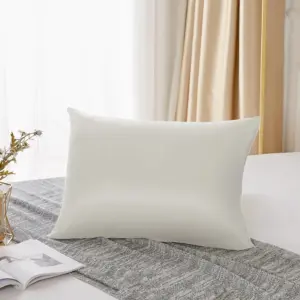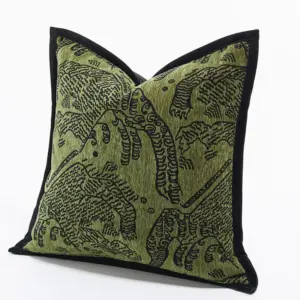Introduction: The Quest for Cooler Sleep With Premium Fabrics
Few things disrupt sleep as consistently as overheating. Night after night, hot sleepers toss and turn, flip pillows, and push away covers in search of cooler comfort. This struggle affects sleep quality and ultimately impacts daytime energy levels and wellbeing.
When addressing this common challenge, the material of your bedding plays a crucial role in regulating body temperature throughout the night. Among premium bedding options, cotton and silk stand out as two natural fibers with distinctive cooling properties.
Both materials offer benefits beyond synthetic alternatives, but they work in fundamentally different ways to keep hot sleepers comfortable. While cotton has long been celebrated for its breathability and moisture absorption, silk offers natural amazing benefits for sleep quality through its unique fiber structure.
Approximately 40% of adults identify as “hot sleepers,” making fabric choice for bedding a significant factor in sleep quality for millions. Understanding the distinct properties of these premium natural materials can transform restless nights into refreshing sleep experiences.
In this comprehensive comparison, we’ll explore how cotton and silk perform for hot sleepers, examining their unique properties, benefits, limitations, and helping you determine which fabric might best suit your specific sleep needs.
Understanding Fabric Properties for Temperature Regulation During Sleep
Before diving into our comparison, it’s important to understand the key properties that determine how well a fabric performs for hot sleepers:
Breathability: How easily air passes through the fabric, allowing heat to escape away from the body. More breathable fabrics create better airflow, preventing the “trapped heat” sensation.
Moisture-wicking: How effectively a fabric draws moisture (sweat) away from the skin to the outer surface where it can evaporate. This differs from simple absorption, which may leave fabric feeling damp.
Thermal conductivity: How efficiently a material transfers heat away from the body. Materials with higher thermal conductivity feel cooler to the touch.
Weight and density: Lighter, less dense fabrics generally allow for better airflow and cooling.
During sleep, your body naturally works to maintain its core temperature, which typically drops slightly to initiate and maintain sleep. When this process is disrupted by heat retention in bedding, sleep quality suffers. Studies show that even small increases in body temperature can fragment sleep patterns and reduce time spent in restorative deep sleep.
The ability of fabrics to regulate temperature varies significantly based on their fiber structure, weave, and processing methods. Natural fibers like cotton and silk have inherent properties that synthetic materials often try to imitate but rarely match completely.
When evaluating bedding for hot sleepers, these properties form the foundation of our comparison. Understanding these characteristics helps explain why certain fabrics feel cooler than others and why some may work better for your specific sleep needs.
Cotton Bedding: Properties and Performance for Hot Sleepers
Cotton stands as one of the world’s most popular and versatile natural fibers. This plant-based material has been used for bedding for centuries, valued for its comfort and accessibility.
Cotton Composition and Types
Cotton is primarily composed of cellulose, a natural polymer that gives the fiber its characteristic properties. The quality of cotton varies significantly based on the length of the fiber (staple):
- Egyptian cotton: Renowned for its extra-long staples, creating exceptionally soft, strong, and breathable fabric
- Pima/Supima cotton: American-grown long-staple cotton known for its durability and softness
- Standard cotton: Shorter staple fibers that are more affordable but typically less durable
Cotton Weaves and Their Effect on Cooling
The weave pattern significantly impacts how cotton performs for hot sleepers:
- Percale: A tight, plain weave with a crisp, cool feel and matte finish. Percale allows excellent airflow, making it the preferred weave for hot sleepers.
- Sateen: A satin-like weave with a smoother, more lustrous finish. While luxurious, sateen’s denser weave can trap slightly more heat than percale.
- Jersey: A knit rather than woven fabric, similar to t-shirt material. Stretchy and soft but can cling and retain more heat.
- Flannel: A brushed weave specifically designed for warmth, not recommended for hot sleepers.
Thread Count and Cooling
Contrary to popular belief, higher thread count doesn’t automatically mean better quality or cooler sleep. For hot sleepers, moderate thread counts (200-400) often provide better airflow than extremely high thread counts, which can create a denser fabric that traps heat. The quality of the fiber and type of weave typically matter more than thread count alone.
Cotton’s natural structure allows it to absorb a significant amount of moisture—up to 27% of its weight—without feeling wet. This makes it particularly effective for sleepers who perspire during the night.
Cotton for Hot Sleepers: Advantages and Benefits
Cotton offers several distinct advantages that make it a strong contender for hot sleepers seeking relief:
Cooling Advantages
Superior breathability: Cotton’s natural fiber structure allows air to circulate freely, especially in percale weave sheets. This helps dissipate body heat throughout the night.
Excellent moisture absorption: Cotton can absorb a significant amount of moisture, pulling sweat away from the skin to create a drier sleeping environment.
Crisp, cool feel: Particularly with percale weave, cotton maintains a naturally cool sensation against the skin, providing immediate comfort for hot sleepers.
Adaptability to ambient temperature: Cotton responds well to room temperature, helping maintain balance in various conditions.
Additional Benefits
Durability with proper care: Quality cotton bedding can last for years, often becoming softer with each wash while maintaining its cooling properties.
Easy maintenance: Cotton is typically machine-washable and can withstand regular laundering without special treatment.
Hypoallergenic qualities: Natural cotton is gentle on sensitive skin and less likely to trigger allergies, making it a good option for those with both heat sensitivity and skin concerns.
Value for money: Even high-quality cotton sheets are generally more affordable than premium silk alternatives for pillowcases and hair care, offering good cooling performance at a lower price point.
Cotton’s versatility makes it adaptable to different sleeping situations. Its immediate cooling sensation upon contact provides psychological comfort for hot sleepers, while its physical properties work through the night to maintain a more regulated sleep temperature.
Limitations of Cotton for Temperature Regulation
Despite its many benefits, cotton isn’t perfect for every hot sleeper. Understanding its limitations helps make an informed decision:
Potential Drawbacks
Moisture retention: While cotton excels at absorbing moisture, it can become saturated in cases of heavy night sweats. Once saturated, cotton remains damp against the skin, potentially causing discomfort.
Variable performance by weave: Not all cotton bedding is created equal for cooling. Sateen weaves and higher thread counts can trap more heat, working against hot sleepers’ needs.
Wrinkles and maintenance: Cotton’s natural tendency to wrinkle means more frequent washing and ironing to maintain its appearance, adding to overall care requirements.
Quality variations: The cooling performance of cotton varies dramatically based on quality. Lower-quality cotton sheets may pill, lose shape, or become less breathable over time.
Weight when wet: Cotton becomes notably heavier when saturated with moisture, which can make it feel cumbersome during particularly sweaty nights.
Cotton’s performance also varies significantly depending on environmental conditions. In high humidity environments, cotton’s moisture absorption can become a disadvantage as evaporation slows, leaving the fabric feeling damp for longer periods.
For extremely hot sleepers or those with night sweats, cotton’s limitations may become more apparent, particularly during peak summer months or in warmer climates.
Best Cotton Options for Maximum Cooling
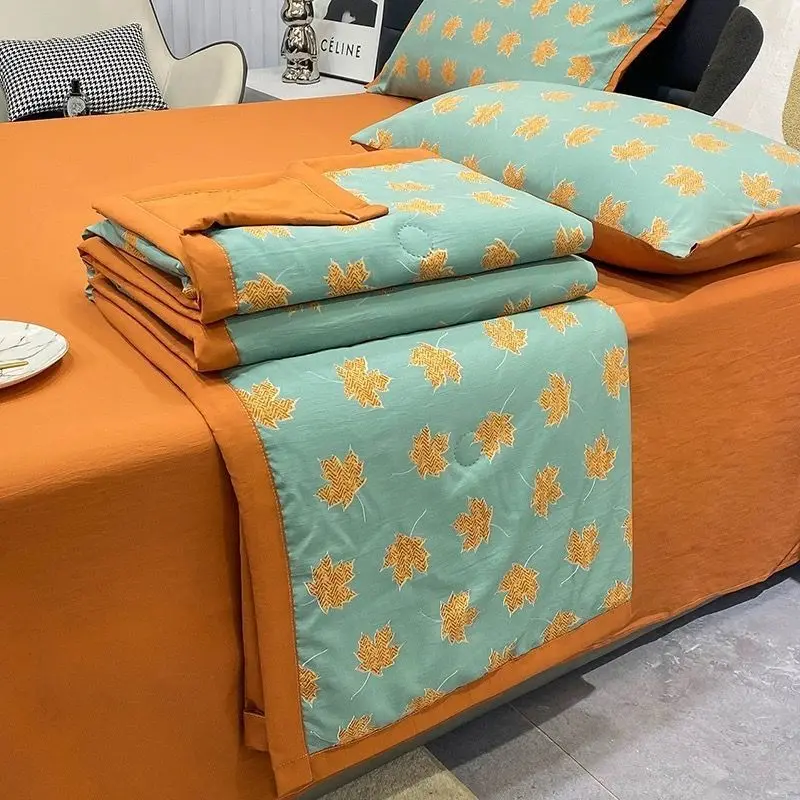
For hot sleepers committed to cotton, specific choices can maximize its cooling potential:
Optimal Cotton Selection
Percale weave is king: Percale’s one-over, one-under weave creates maximum breathability. Look specifically for sheets labeled “percale” rather than just “100% cotton.”
Thread count sweet spot: For cooling, aim for 200-400 thread count. This range provides durability while maintaining optimal airflow. Higher isn’t always better for hot sleepers.
Long-staple varieties: Egyptian and Pima/Supima cotton with their longer fibers create smoother, more durable sheets that maintain breathability over time.
Color considerations: Lighter colors reflect heat rather than absorb it, making white, cream, or pastel sheets preferable for hot climates.
Care Tips for Maintaining Cooling Properties
- Avoid fabric softeners, which coat fibers and can reduce breathability
- Line-dry when possible to maintain fiber structure and airiness
- Wash in cool water to prevent fiber compression and maintain the open weave
Seasonal Strategies
Consider using lighter cotton sheets (lower thread count percale) during summer months, potentially switching to slightly higher thread count or sateen weaves during cooler seasons for balanced comfort year-round.
For the most extreme hot sleepers, combining cooling cotton sheets with a moisture-wicking mattress protector can create a more comprehensive cooling system for better sleep.
Silk Bedding: Properties and Performance for Temperature Regulation
Unlike cotton’s plant-based composition, silk is a protein fiber produced by silkworms. This fundamental difference creates distinct properties that affect temperature regulation during sleep.
Silk Composition and Types
Silk is primarily composed of proteins, specifically fibroin and sericin. These protein structures give silk its characteristic smooth feel and natural temperature-regulating properties.
The most common types of silk used in bedding include:
Mulberry silk: The highest quality silk, produced by silkworms fed exclusively on mulberry leaves. This creates a consistent, smooth fiber with exceptional durability. Sanctuary Soft specializes in premium Mulberry silk bed sheets for their superior quality.
Tussah/Wild silk: Produced by wild silkworms, resulting in slightly less uniform but still luxurious fibers.
Understanding Momme Weight
Unlike cotton’s thread count, silk quality is measured by momme weight (mm), which indicates the density of the silk:
- 16-19 momme: Lighter weight, more affordable, but less durable
- 19-25 momme: The ideal range for bedding, balancing durability with softness
- 25+ momme: Very dense, highly durable, but potentially less breathable
The unique structure of silk fibers contributes to its temperature regulating ability. Each fiber contains tiny triangular prism-like structures that refract light (creating silk’s shine) but also help with air circulation and moisture management.
Silk’s amino acid composition makes it remarkably similar to human skin, which is partly why it interacts so differently with our bodies compared to plant-based fibers. What makes Mulberry silk special is this unique composition combined with the exceptional quality of the specific silkworm variety and their diet.
Silk for Hot Sleepers: Advantages and Benefits
Silk offers hot sleepers a different approach to cooling compared to cotton, with several distinct advantages:
Cooling Advantages
Natural thermoregulation: Rather than simply being cool to the touch, silk adapts to body temperature. It helps keep you cool when hot and warm when cold, creating balanced temperature regulation throughout the night.
Effective moisture management: Instead of absorbing moisture like cotton, silk wicks moisture away while its surface remains relatively dry. This helps silk prevent night sweats by creating a microclimate that balances humidity.
Lightweight breathability: High-quality silk allows air circulation while feeling virtually weightless against the skin, preventing the trapped heat sensation that disrupts sleep.
Smooth surface temperature: Silk’s exceptionally smooth surface creates less friction against the skin, which can feel cooler compared to textured fabrics.
Additional Benefits
Hypoallergenic properties: Silk naturally resists dust mites, mold, mildew, and many allergens, making it ideal for sensitive sleepers.
Skin and hair benefits: The smooth surface reduces friction against skin and hair, helping prevent sleep wrinkles and bedhead while being gentle on sensitive skin.
Protein-rich composition: Silk contains 18 amino acids that interact positively with human skin, potentially providing beauty benefits beyond simple comfort.
Luxurious aesthetic and feel: Beyond functional benefits, silk’s lustrous appearance and drape create an elevated sleep experience.
For those who struggle with varying body temperature throughout the night, silk’s adaptive properties can be particularly beneficial compared to fabrics that are simply “cooling” but don’t respond to temperature changes.
Limitations of Silk for Hot Sleepers
While silk offers impressive benefits, it’s important to consider its limitations for hot sleepers:
Potential Drawbacks
Lower absorbency: Though excellent at wicking moisture, silk doesn’t absorb as much moisture as cotton. For those with heavy night sweats, this could be a limitation.
Care requirements: Silk typically requires more delicate care than cotton, including hand washing or gentle machine cycles, air drying, and protection from direct sunlight.
Initial investment: Quality silk bedding represents a higher upfront cost than cotton alternatives, though many consider it an investment in better sleep.
Delicate nature: Without proper care, silk can be more vulnerable to damage than cotton, requiring more attention to maintenance.
Slippery texture: Some sleepers find silk’s smooth surface too slippery, especially for combination sleepers who change positions frequently.
Despite the higher price point, many hot sleepers find the investment worthwhile when they discover the temperature-regulating benefits of high-quality cooling silk sheets. The key is understanding whether silk’s specific benefits address your particular sleep challenges.
Environmental factors also affect silk’s performance. In very humid environments, silk’s moisture-wicking properties may be less effective, though it typically outperforms cotton in these conditions due to its lower absorption rate.
Cotton vs. Silk: Direct Comparison for Hot Sleepers
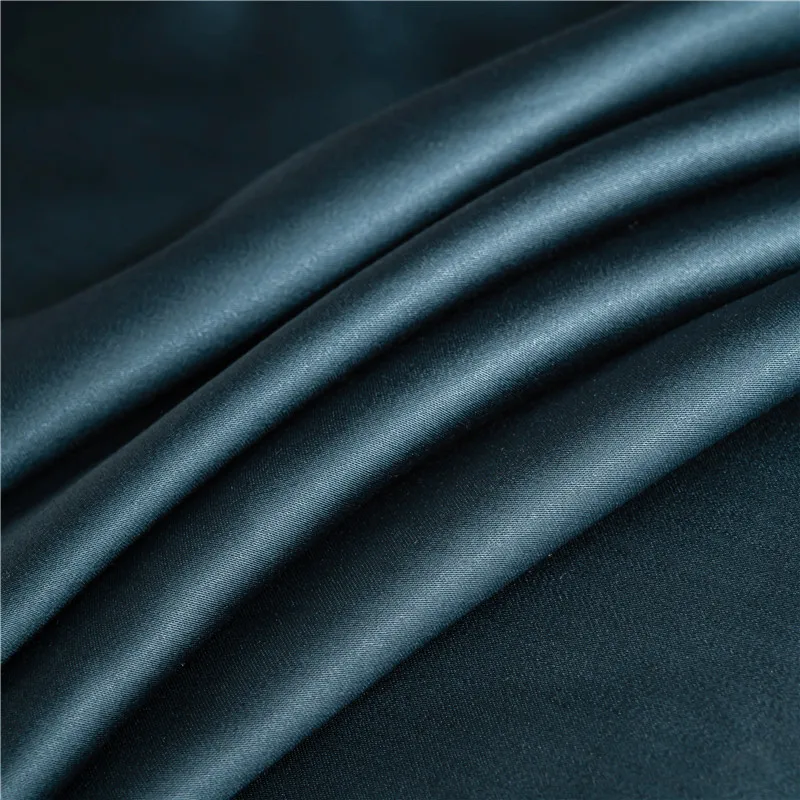
For hot sleepers choosing between cotton and silk, this side-by-side comparison highlights key differences:
| Feature | Cotton | Silk |
|---|---|---|
| Cooling Mechanism | Absorbs moisture, allows heat to escape through breathable weave | Regulates temperature adaptively, wicks moisture while staying dry |
| Breathability | Excellent (especially percale) | Very good |
| Moisture Management | High absorption capacity | Moderate absorption, superior wicking |
| Feel Against Skin | Crisp, textured (percale) or smooth (sateen) | Exceptionally smooth, frictionless |
| Durability | Good with proper care, becomes softer over time | Very good with proper care, maintains properties |
| Care Requirements | Machine washable, relatively easy | Delicate cycle or hand wash, more particular care |
| Cost | $50-200 for quality sets | $300-1000+ for quality Mulberry silk sheets |
| Best For | Heavy sweaters, those who prefer crisp feel, budget-conscious shoppers | Temperature fluctuations, sensitive skin, those seeking luxury, moderate sweaters |
| Less Ideal For | Very humid environments, those with sensitive skin | Very heavy sweaters, those on strict budgets |
Performance Analysis for Different Hot Sleeper Types
For heavy night sweats: Cotton’s superior absorption capacity may be advantageous, particularly in percale weave. While silk wicks moisture effectively, cotton can handle larger volumes of sweat.
For temperature fluctuations: Silk’s adaptive thermoregulation excels here, as it responds to body temperature changes throughout the night. Cotton maintains a more consistent feel regardless of temperature.
For sensitive skin or allergies: Silk’s smooth surface and hypoallergenic properties generally outperform cotton, reducing friction and potential irritation.
For value assessment: While cotton offers a lower initial investment, silk’s durability (with proper care) and additional skin/hair benefits may provide better long-term value for some sleepers.
The fundamental difference lies in how each fabric handles heat and moisture: cotton works through absorption and breathability, while silk functions through adaptive temperature regulation and moisture wicking while maintaining a dry surface.
Making the Right Choice: Personalized Recommendations
Based on specific sleep needs and preferences, here are tailored recommendations to help you choose:
For Very Hot Sleepers with Heavy Night Sweats
Cotton percale sheets in the 200-300 thread count range may be your best option. The exceptional moisture absorption and highly breathable weave will help manage significant perspiration. Look for long-staple cotton varieties for improved durability and softness.
For Warm Sleepers Seeking Luxury and Temperature Regulation
High-quality silk sheets in the 19-22 momme range offer an excellent balance of breathability and temperature adaptation. Silk’s ability to adjust to body temperature makes it ideal if you experience both warm and cool phases throughout the night.
For Those with Sensitive Skin or Allergies
Silk’s smooth surface and hypoallergenic properties make it the superior choice. The reduced friction against skin helps prevent irritation, while its natural resistance to dust mites and mold provides additional protection for allergy sufferers.
For Budget-Conscious Quality Seekers
High-quality cotton percale offers excellent cooling performance at a more accessible price point. Focus on long-staple cotton varieties with appropriate thread count rather than less expensive, lower-quality options that won’t perform as well.
Creative Hybrid Solutions
Consider combining materials for the best of both worlds. For example, using silk pillowcases with cotton sheets provides skin and hair benefits where direct contact matters most, while keeping overall costs lower than a complete silk set.
Remember that seasonal rotation can also be effective. Some hot sleepers prefer lightweight cotton during peak summer months but enjoy silk’s adaptive properties during transitional seasons.
Bamboo Silk Sheets, Cooling Silk Sheets
Price range: $130.76 through $177.80 Select options This product has multiple variants. The options may be chosen on the product pageBamboo Silk Sheets, Queen Size Silk Fitted Sheet
Price range: $230.24 through $297.88 Select options This product has multiple variants. The options may be chosen on the product pageKing Size Silk Pillowcases, Mulberry Silk Pillowcases, Queen Size Silk Pillowcases
Price range: $94.96 through $121.56 Select options This product has multiple variants. The options may be chosen on the product pageMulberry Silk Fitted Sheet, Mulberry Silk Sheets
Price range: $486.21 through $944.97 Select options This product has multiple variants. The options may be chosen on the product page100% Silk Sheets, Queen Size Silk Fitted Sheet, Queen Size Silk Pillowcases, Queen Size Silk Sheets
Price range: $259.05 through $284.13 Select options This product has multiple variants. The options may be chosen on the product pageQueen Size Silk Pillowcases, Standard Size Silk Pillowcases
Price range: $121.49 through $127.57 Select options This product has multiple variants. The options may be chosen on the product page
When evaluating long-term value, consider not just the initial purchase price but also durability, maintenance requirements, and the quality of sleep each fabric provides. Better sleep is an investment in overall health and wellbeing.
Beyond Fabric: Additional Tips for Cooler Sleep
While your choice of bedding fabric plays a crucial role in temperature regulation, these complementary strategies can enhance cooling effects:
Environmental Optimization
- Maintain bedroom temperature between 65-68°F (18-20°C), the ideal range for quality sleep
- Use a fan or air conditioning to improve air circulation
- Consider a dehumidifier in humid climates, as lower humidity improves the cooling efficiency of both cotton and silk
Bedding Strategies
- Choose a cooling mattress protector or topper designed with breathable materials
- Select pillows with cooling technology or natural materials that don’t retain heat
- Consider bamboo-silk blends as an alternative option that combines cooling properties
Pre-Sleep Routine
- Take a lukewarm shower before bed to lower your core body temperature
- Stay hydrated throughout the day, as proper hydration helps regulate body temperature
- Avoid heavy meals, alcohol, and intense exercise close to bedtime, all of which can raise body temperature
Seasonal Adjustments
- Layer lightweight bedding rather than using single heavy covers for more temperature control
- Consider switching between cotton and silk based on seasonal needs
- Rotate pillowcases more frequently during hot weather to maintain freshness
These strategies work synergistically with your choice of cooling fabrics, creating a comprehensive approach to temperature regulation during sleep.
Frequently Asked Questions About Cotton and Silk for Hot Sleepers
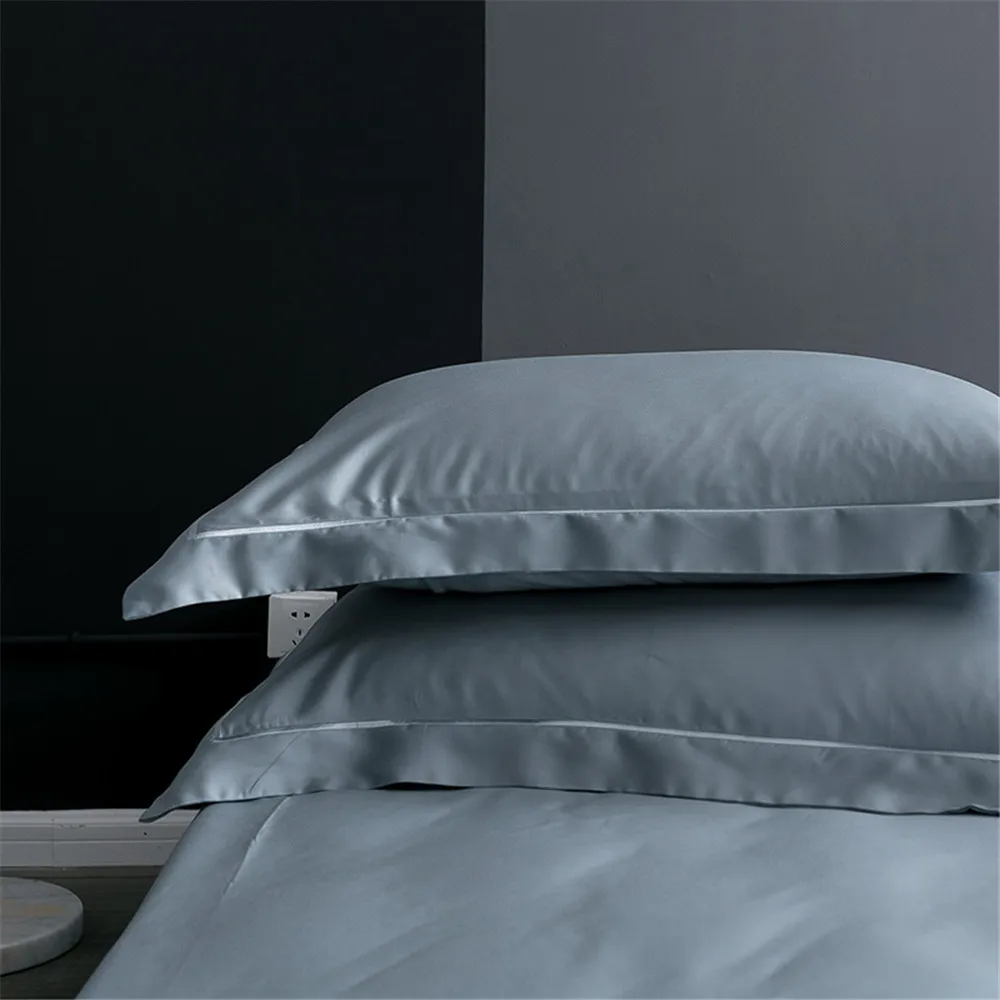
Is cotton hotter than silk for sleeping?
Not necessarily. Cotton is typically cooler to the initial touch and better at absorbing large amounts of moisture, making it feel cooler for heavy sweaters. However, silk regulates temperature more adaptively throughout the night and stays dry on the surface, which some hot sleepers prefer.
Does silk make you sweat more?
No, silk doesn’t cause increased sweating. In fact, its temperature-regulating properties help maintain balanced body temperature. However, silk wicks rather than absorbs moisture, so if you sweat heavily, you might notice moisture differently than with highly absorbent cotton.
What thread count is best for cotton sheets for hot sleepers?
For hot sleepers, moderate thread counts between 200-400 are typically ideal, especially in percale weave. Higher thread counts can create denser fabrics that trap more heat and reduce breathability.
What momme weight is best for silk sheets for hot sleepers?
19-22 momme typically offers the best balance for hot sleepers. This range provides adequate durability while maintaining optimal breathability and temperature regulation.
How often should cooling sheets be replaced?
Quality cotton sheets typically last 3-5 years with proper care, while well-maintained silk sheets can last 5-10 years or more. Replace sheets when they show signs of thinning, pilling, or diminished cooling properties.
Can I combine cotton and silk in my bedding?
Absolutely! Many hot sleepers use silk pillowcases for skin and hair benefits while using cotton sheets for their body. This combination offers targeted benefits where they matter most.
How do you care for silk sheets to maintain cooling properties?
Hand wash or use gentle machine cycles with mild detergent, avoid fabric softeners, never wring or twist, and air dry away from direct sunlight. Proper care maintains silk’s natural temperature-regulating properties.
Are there alternatives to silk with similar cooling benefits?
Yes, high-quality bamboo-silk blends offer some similar properties at a lower price point. These alternatives provide good moisture-wicking and temperature regulation, though pure mulberry silk remains superior for overall luxury and benefits.
Conclusion: Creating Your Ideal Sleep Environment
The choice between cotton and silk sheets for hot sleepers ultimately depends on your specific needs, preferences, and sleep challenges. Both fabrics offer distinct approaches to temperature regulation during sleep.
Cotton excels through its excellent breathability, superior moisture absorption, and crisp, cool feel—particularly in percale weave. Its accessibility and easy care make it a practical choice for many hot sleepers, especially those who experience heavy night sweats.
Silk distinguishes itself through adaptive temperature regulation, efficient moisture-wicking while maintaining a dry surface, and additional benefits for skin and hair health. Its luxury feel and hypoallergenic properties make it worth considering despite the higher investment.
Many hot sleepers find success with a thoughtful combination of both materials or seasonal rotation between the two. Remember that quality matters significantly with both fabrics—a high-quality cotton sheet will outperform low-quality silk, and vice versa.
By understanding how each fabric works with your body’s natural temperature regulation, you can make an informed decision that transforms restless, overheated nights into cool, restorative sleep experiences. Your ideal sleep sanctuary awaits, whether wrapped in crisp cotton, smooth silk, or a strategic combination of both.

